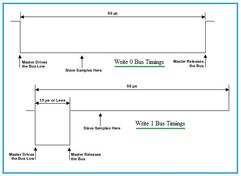
1-Wire Communication Protocol: Single Wire Interface Overview
Explore the 1-Wire protocol, developed by Dallas Semiconductor, which uses a single wire for data transmission, making it cost-effective for diverse applications.
Showing 25 posts (Page 1 of 7)
Advertisement

Explore the 1-Wire protocol, developed by Dallas Semiconductor, which uses a single wire for data transmission, making it cost-effective for diverse applications.
Explore 10 key advantages and disadvantages of modern technology from smartphones to virtual reality.

Explore 10 advantages and disadvantages of Radio Broadcasting.It mentions benefits or advantages of radio broadcasting and drawbacks or disadvantages of radio broadcasting.
Explore 10 advantages and disadvantages of visual communication.Learn how it enhances understanding while facing limitations in interpretation and context.
Explore common automotive protocols (CAN, LIN, FlexRay, Ethernet) with 10 interview questions and answers. Learn about data integrity, security, and diagnostics in modern vehicles.
Prepare for your DMR job interview with these 10 frequently asked questions and detailed answers covering DMR technology, tiers, and applications.
Prepare for your engineering interview with these frequently asked 10 questions and answers about Ethernet technology.
Prepare for mobile communication job interviews with these frequently asked 10 questions and detailed answers, covering GSM, CDMA, network components, and more.
Prepare for your interview with these 10 key Physical Layer questions and answers. Master the fundamentals for engineering and job success.

Explore frequently asked 10 interview questions and answers about the TETRA radio system, covering its features, functionality, and technical aspects.
Prepare for UWB job interviews with these 10 questions and detailed answers. Learn about UWB features, applications, and technology.

Explore 5 key advantages and disadvantages of 1-Wire interface protocol, including benefits like simple wiring and cost and drawbacks like slow speed and software complexity.

Explore 5 key advantages and disadvantages of SMS (Short Message Service) communication.

Understand the differences between 5G eMBB, mMTC, and URLLC, exploring their applications, data rates, latency, and key features.

Explore the benefits and drawbacks of the 60GHz frequency band, including its bandwidth, security, range limitations, and absorption characteristics.
VHDL source code for 64QAM modulation, including entity declaration and architecture for data mapping.
Explore 6G wireless technology: features, applications, network architecture, key advancements, advantages, disadvantages, and comparison with 5G.

Explore 5 key advantages and disadvantages of 6G wireless technology, including benefits like increased connection density, revolutionizing healthcare, and THz frequency and challenges like VLC, THz and energy consumption.

Explore the benefits and drawbacks of oneM2M, a standard for M2M and IoT, including cost savings, interoperability, and challenges like security and privacy.

Explore advantages and disadvantages of the Telegram app over Whatsapp.Learn about its security features and speed alongside challenges like user adoption and functionality.
Explore the distinctions between analog and digital delay, focusing on signal processing, musical applications, and achievable delay times.

Explore the fundamental differences between analog and digital modulation techniques, with clear examples of AM, FM, ASK, FSK, and PSK.
Explore the key differences between analog and digital radio technologies, including their working principles, advantages, and disadvantages in two-way radio systems.
Explore the fundamental differences between analog and digital signals and data, including data types, conversion methods (ADC/DAC), mathematical representations, and transmission techniques.
Explore the fundamental differences between analog and digital transmission, including signal types, distance capabilities, and attenuation handling.
Advertisement